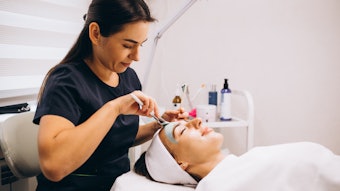
Some of the most common questions my team and I get asked all the time at APX Platform powered by Engage Technologies Group are, “How do I know when it’s time to expand?” or “How do I know when it is time to hire new staff or to lease/build out more space?”
So, I wanted to take this opportunity to give you some basic guidelines.
Types of Expansion
It is important to understand that expansion doesn’t always mean a new physical space. Potential avenues that can expand your practice and build your revenue include:
- Additional staffing/providers
- Additional service lines/new device
- Additional operational capacity
- Additional provider capacity
- Additional clinical space
Staff/Providers: Perhaps in your current location, you have a lot of space, but you don’t have someone providing treatments in all those spaces, so you may want to consider hiring an additional team member. When I was the managing partner for a medical spa in Beverly Hills, I used to always be in hiring mode and on the lookout for talent. I was always thinking about staffing and providers. That way, if I lost a staff member or was looking to expand with another provider, it was not always a last minute scramble to fill an opening with a candidate who was not as qualified as I would have liked.
Service Lines/New Devices: Another way to expand could be looking at adding an additional service line or a new device that could help with practice expansion. Maybe there’s something that you’re not doing or something that you can add to the category of services that you’re providing in your practice that could elevate your clients’ experience or bring in more revenue. Within APX Platform we have a Revenue per Hour calculator that can help you analyze what you plan to charge for a new service vs. what your costs of goods associated with that service are to determine the revenue being generated.
Operational Capacity: Sometimes an avenue to expand is looking at your operational capacity. Maybe you are open Monday through Friday, and instead of looking at more space, you could expand your hours. Have your front desk track how many callers are looking for evening/after work appointments or weekend appointments, so you have some data.
Provider Capacity: Provider capacity is another factor to consider. You want to make sure your team is happy with their schedule, but you also want to make sure your providers are working at their maximum productivity and their hours meet the needs of your business. I had a provider who preferred to work from 7am-7pm three days a week, and trust me, those slots were booked months in advance.
Clinical Space: Regarding adding additional clinical space, we’ll dive into that more in a bit, but I wanted to mention that sometimes you can be more creative with the existing space you have. I have seen situations where we had an extra office or call center. You could move that to a space that is not as expensive, such as a business park, so you can convert that room to be a revenue producing room. A lot of practices had to get creative during COVID-19 and started doing virtual consultations with the client’s cosmetic interest questionnaire (CIQ)/health forms and making recommendations for services that way. So, there are ways to get creative to accommodate more clients before you talk about needing to expand your physical space.
Factors to Consider
If you feel expansion is on the horizon, then it is important to evaluate your practice from the standpoint of:
- Capacity
- Utilization
- Productivity
- Efficiency
Capacity: When considering capacity, ask yourself: Is your operational capacity maxed out? Can you extend your hours? Is your schedule optimized? Maybe you have gaps in the wrong places in your schedule or you’re not being as efficient with the appointment times. For example, some providers are taking longer than others to perform the same services or consultations. This can create scheduling issues. So, you want to make sure your operational capacity and provider capacity is optimized.
Utilization: In terms of utilization, you need to evaluate how full your providers’ schedules are with revenue generating activities. So, you want to analyze the hours sold vs. their hours worked. Just because you have a provider who is working eight hours a day does not mean that those eight hours are generating revenue for your practice. Can they be more efficient during those hours?
Productivity: This leads us to productivity. Are your providers’ productivity maxed out with a healthy service mix? You want to make sure that your service mix is maximizing your most profitable treatments or procedures. For example, are they performing a lot of facials vs. chemical peels or microneedling (which generates a higher profit per treatment). Do you know your most profitable treatments? You really want to dig into that productivity in terms of your providers, as it is vital to understand when it comes to expansion. Some of the ways you can help expand their ability to generate revenue include teaching them how to create effective longer-term treatment plans with skin care regimens, as well as providing expert sales and consultation training and follow up strategies.
Efficiency: In addition, you want to evaluate the efficiency of your space and whether you are using it to the best of its ability. Are there rooms that can be better served as treatment rooms? Sometimes you can change rooms around for various purposes. For example, numbing time. Are you numbing a patient in a treatment room and taking up time and space that could be used for a higher revenue generating treatment/procedure such as a laser treatment, or could you be performing another injectable service in that room while the patient is numbing in a different area? Again, you want to maximize efficiency of your current space.
APX Platform powered by Engage Technologies Group has tools within the platform that can help you figure out provider productivity, capacity, revenue per hour and profit per treatment to determine the right mix of services.
Metrics to Monitor
The following are some key metrics you need to be monitoring because what gets measured gets managed!
- Revenue: Your gross revenue by category as well as your net
- Expenses: The Cost of Goods (COGs) by category and total
- Projected Growth: What does your forecast look like?
- Revenue Per Hour & Profit Per Treatment
- KPIs: Provider Productivity, Provider Capacity
- Utilization: Do you physically have room to grow?
I find a lot of practices are tracking revenue, but you also need to monitor your expenses because at the end of the day, you can continue to grow your revenue, but if your expenses are growing at that same rate, your bottom line is not going to change. So, you need to monitor your Cost of Goods and other expenses carefully to ensure you’re keeping those things in check and in a healthy range.
You want to watch your projected growth and be forecasting and looking at trends in your practice to determine what you can expect moving forward. This is key if you’re thinking of adding a service line or new device. You need to know your Revenue Per Hour and Profit Per Treatment. You also want to monitor and understand what bringing on a new provider will do in terms of what they can produce vs. the expense or what it will cost to hire so you can determine your return on investment (ROI). You want to monitor KPIs around your providers in terms of their specific productivity as well as their capacity. Remember, hours sold vs. hours worked. You need to know how busy their schedule truly is. Then, of course, utilization for your practice – how many hours you are open vs. how many hours you have providers working and how efficient are you using the space you have.
If you get to a point where you realize you are utilizing your maximum potential or are getting very close, then it is time to start thinking about expanding to a new location.
Benchmarks
Here are some general guidelines in terms of benchmarks for these key metrics.
1. Capacity:
Hours of operation per year & the hours our providers are working per year.
- If you are at 70-80%, you may need to consider additional hours of operation.
- If you are at a lower percentage, but your operational hours are high and provider hours are low…It may be time to bring in an additional provider (this needs to be considered with utilization).
2. Utilization:
Are provider schedules full of sold hours or just worked hours?
- Hours sold divided by sellable hours. If this utilization number is more than 70%, then you may want to start considering hiring additional providers.
- If this provider is not full time, do they want
more hours?
Space Utilization
- How many rooms do you have, and what percentage of time are they being utilized for revenue generation?
- Is it time to consider different space opportunities? Either within your current space or in a new space?
3. Productivity:
Is provider productivity maximized with a healthy service mix?
- RPH and Service Mix Percentage = Actual Revenue divided by the sold hours & what services they
are selling - Is your service mix maximizing higher profiting procedures?
- If not, you need to work on strategies with your treatment plans to get a better mix, promote your high profit margin services, learn rebooking and follow-up strategies.
- Is your Revenue Per Hour hitting role appropriate benchmarks?
- Surgeons – More than $3000 an hour
- Surgeons, M.D.s (non-surgical services)–$800 - $1200+ an hour
- N.P., P.A., R.N.s - $600-$1000+ per hour
- Aesthetician Plus (lasers) - $400-$800 per hour
- Aestheticians - $250-350 per hour
4. Efficiency:
Are there any other rooms that would serve better as treatment rooms? Are you using your space for non-revenue generating services like numbing?
- Evaluate your Workflow Efficiency & SOPs
- Scheduling Optimization
Making a Strategic Plan
I love the saying, “If you fail to plan, you plan to fail.” I want to make sure you are thinking all these factors through before you just leap to expand. Maybe you find that you are hitting capacity. Maybe you find that expanding your operational hours is going to be important or perhaps hiring a provider. Maybe you have exhausted all these potential ways to expand and grow your practice, and it truly is time to think about a new location. Whatever the situation is, you must have
a plan.
You want to set specific and measurable goals for your team, providers and practice regarding what you want to achieve and a realistic timeline. You want to be creating a financial forecast and anticipate future growth in terms of new hires, new service lines, capital purchases or facility updates needed to utilize space in a better way. You don’t want to have knee jerk reactions thinking your schedule is full and then jump into hiring 2-3 more providers and starting to search for a new building without really understanding and monitoring your metrics and having a strategic plan in place.
Remember, my team and I are always here to help you reach your maximum potential and answer any questions you may have. I invite you to DM me on social media or reach out to [email protected].
--
Terri Ross is a world-renowned practice management expert, thought leader, and international speaker in the medical aesthetic industry. She founded APX Platform in 2021. In 2023 after only two years post-launch, APX merged with Engage Technologies Group to offer a complete practice performance system, encompassing practice optimization and patient engagement. Terri now serves as President of Aesthetics at Engage Technologies Group.











